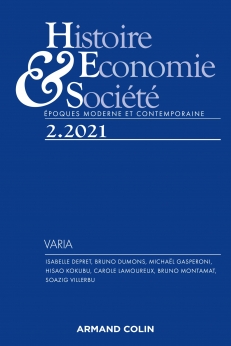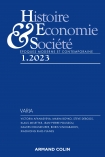
HISTOIRE, ECONOMIE ET SOCIÉTÉ (2/2021)
Pour acheter ce numéro, contactez-nous
Recevez les numéros de l'année en cours et accédez à l'intégralité des articles en ligne.
Créée en 1856, la société Pont-à-Mousson (PAM) produit de la fonte brute avec pour principal débouché les tuyaux d’adduction d’eau et de gaz. En 1970, lors de la fusion avec Saint-Gobain, ces activités demeurent centrales pour son identité et sa stratégie. À plus d’un égard, le choix initial de la fonte, constamment renouvelé, semble avoir orienté le modèle industriel de l’entreprise. Avant 1914 s’est en effet déployé un modèle axé sur l’écoulement de la fonte brute jusque sur les marchés d’exportation. Le tuyau en fonte rencontre cependant la concurrence croissante de l’acier. Tandis que le ciment et le béton montent également en gamme, PAM s’empare d’une innovation qui lui confère un avantage technique et commercial : la fonte ductile.
Created in 1856, Pont-à-Mousson (PAM) corporation produced cast iron with water and gas pipes as main outlets. In 1970, when PAM merged with Saint-Gobain, those two activities were still essential for their identity and strategy. Then, this initial choice of cast iron was continually reaffirmed. In many ways, it seems to have orientated the firm’s industrial model. Indeed, before 1914 a model had been unfolded from the very first need of using up cast iron as far as on the export markets. Nonetheless cast-iron pipes met the growing competition of steel. As cement and concrete were also going upmarket, PAM seized on an innovation which gave them a key technical and commercial advantage: ductile iron.

